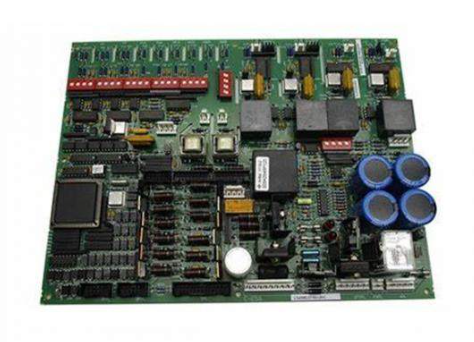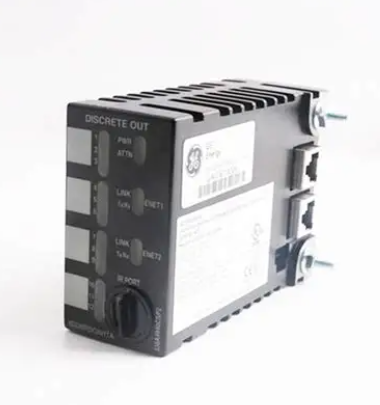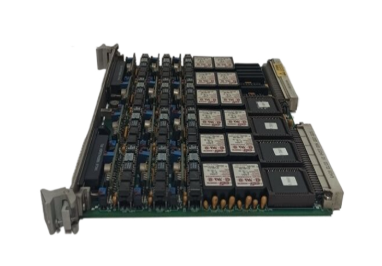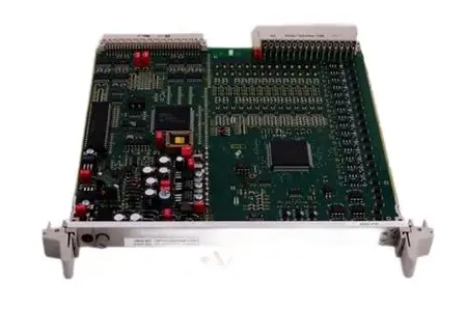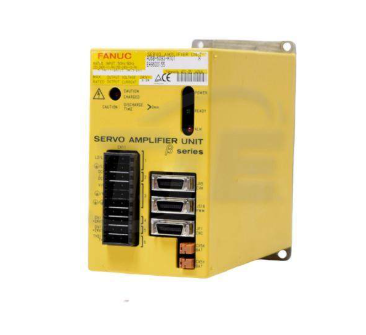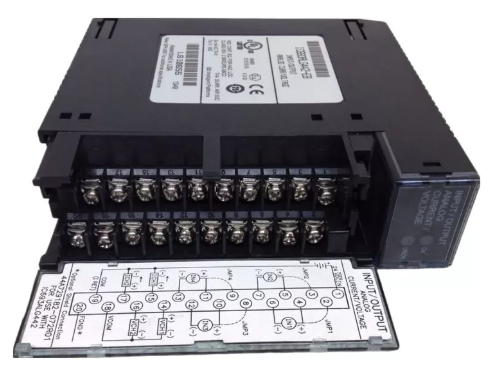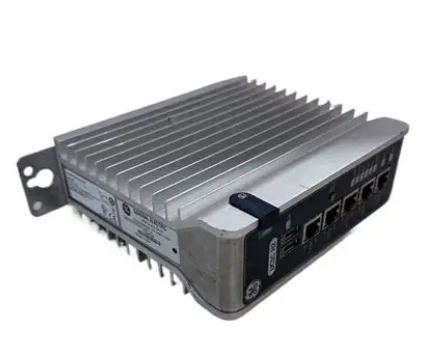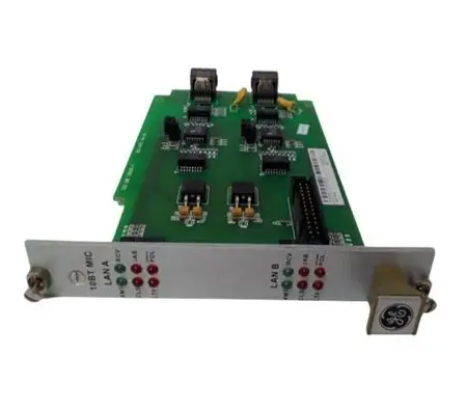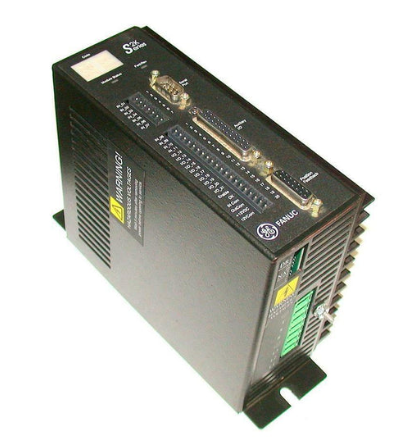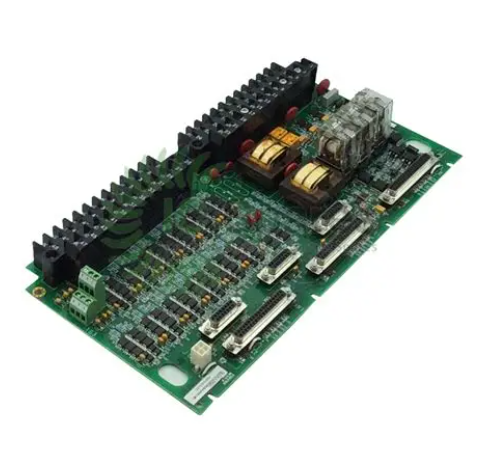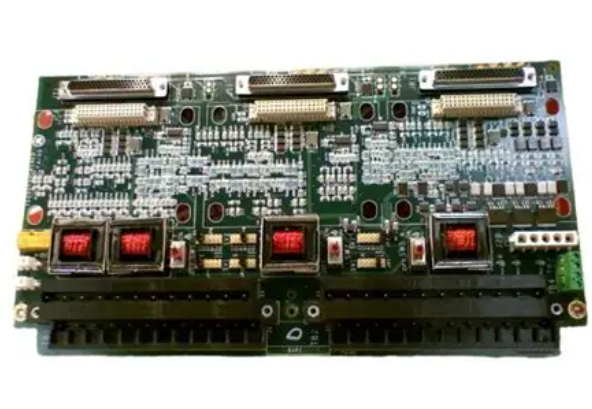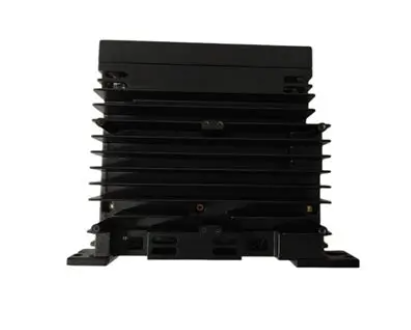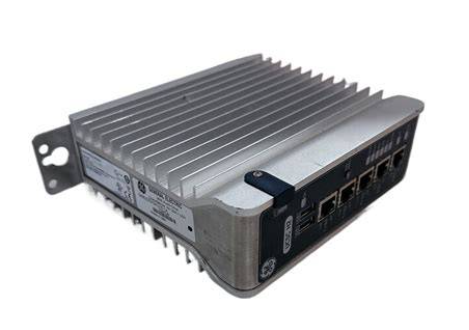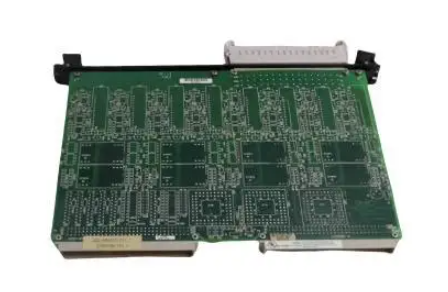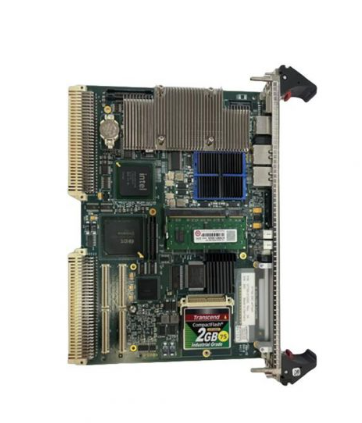Honeywell Satellite XT gas detection transmitter
Honeywell Satellite XT gas detection transmitter
Product overview
Satellite XT is an intelligent gas detection transmitter that uses a unique electrochemical sensor to detect toxic, corrosive, and flammable gases, making it a simple solution to meet all gas detection needs at any point of use. Based on the smallest and most reliable electrochemical cell technology on the market, it has the characteristics of flexibility, simplicity, and ease of application. It has two configurations to choose from, analog and digital, and can be integrated with new or existing facility control technologies. Among them, the digital version of Satellite XT is based on LonWorks ® Technology, based on LonWorks ® The life safety system built on the network platform allows users to utilize the cost-effectiveness of distributed control while maintaining the integrity and reliability required for compliant security applications.
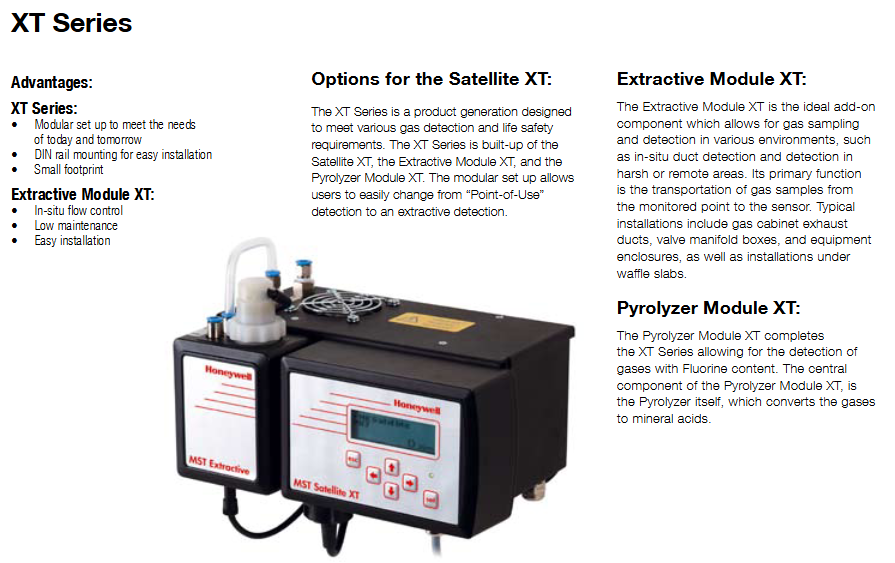
Application scenarios
Suitable for gas detection in various scenarios, including:
Gas cabinet
Valve manifold box
Equipment casing
Environmental breathing zone
Gas storage room
Original Equipment Manufacturer (OEM) equipment
Typical installation scenarios include gas cabinet exhaust pipes, valve manifold boxes, equipment enclosures, and environmental breathing zones. On site attachments provide sampling options for various environments, including in-situ pipeline testing and extractive design for harsh or remote areas.
Product advantages
Fast, reliable, and specific gas detection
Continuous real-time monitoring
Interchangeable intelligent sensor units
No need for dynamic gas calibration
General sensor head electronic device
LOW COST OF OWNERSHIP
No easily worn or replaceable moving parts
Modular settings to meet current and future needs
DIN rail installation, easy to install (advantages of XT series)
The extraction module XT has the advantages of in-situ flow control, low maintenance, and easy installation
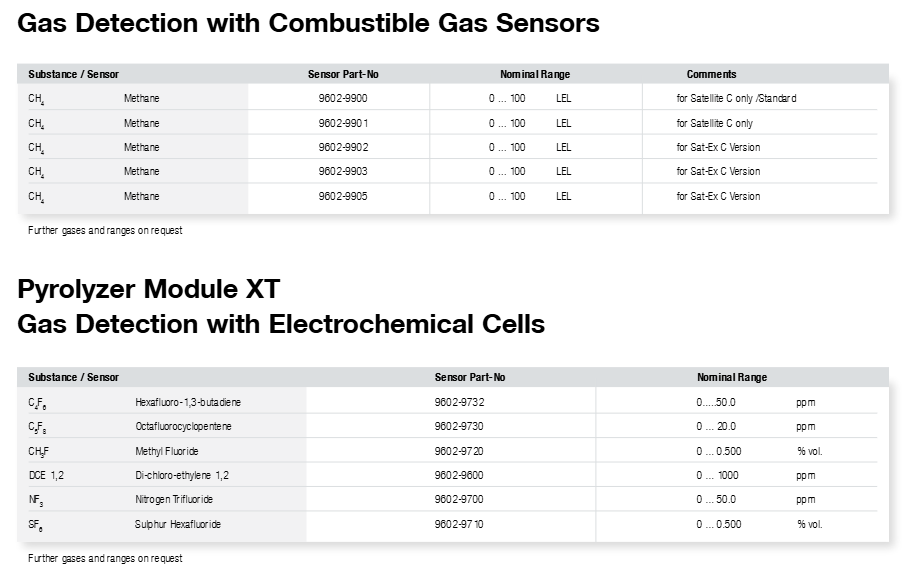
Series composition and options
The XT series is a product line designed to meet various gas detection and life safety requirements, consisting of Satellite XT, Extraction Module XT, and Pyrolysis Module XT. Modular settings allow users to easily switch from "point of use" detection to extractive detection.
Extraction module XT: an ideal add-on component that allows gas sampling and detection in various environments, such as in-situ pipeline testing and detection in harsh or remote areas. Its main function is to transfer gas samples from monitoring points to sensors.
Pyrolysis module XT: The XT series has been improved to allow for the detection of fluorine-containing gases. Its core component is the pyrolyzer, which can convert gases into inorganic acids.
Sensor Expansion: Available in three lengths: 1 meter, 2 meters, and 3 meters.
Sensor related
Electrochemical cell gas detection sensor
It covers various substances, such as arsine (AsH ∝), diborane (B ₂ H ₆), bromine (Br ₂), chlorine (Cl ₂), etc. Each substance corresponds to different sensor models, nominal ranges, and related descriptions, and more gases and ranges can be provided upon request.
Combustible gas sensor
For methane (CH ₄), there are various sensor models with nominal ranges of 0... 100 LEL, suitable for different versions of equipment.
Pyrolysis module XT electrochemical cell gas detection sensor
Including hexafluoro-1,3-butadiene (C ₄ F ₆), octafluorocyclopentene (C ₅ F ₈), etc., each substance corresponds to a specific sensor model and nominal range.
Working principle of sensors
Electrochemical sensors are all ampere type, similar to fuel cells. In order to generate current, they lack a component, which is the gas (target gas) that should be detected. The target gas diffuses through the breathable membrane into the sensor, where an electrochemical reaction occurs, producing a low current proportional to the measured gas concentration (usually read in nA/ppm).
The current is amplified into a signal and processed by electronic circuits to display real-time gas concentration. The zero current of electrochemical cells always exists and is monitored and suppressed by electronic devices.
Honeywell Analytical Instruments has created an "intelligent sensor" with a built-in PROM that programs all relevant sensor data (such as sensitivity, target gas, first calibration date, calibration data, zero current, and alarm level) onto the chip. The detector can read this data and automatically adjust the amplification factor.
Sensor self-test
All relevant sensor data is programmed into the PROM inside the electrochemical sensor, and the detector can read this data. Perform an automatic sensor self-test every 24 hours, comparing the electronically activated sensor signal with the stored calibration curve to ensure that the sensor remains within the specifications set during the initial calibration. If the sensor exceeds the specifications, the instrument will indicate that the sensor needs to be checked or replaced.
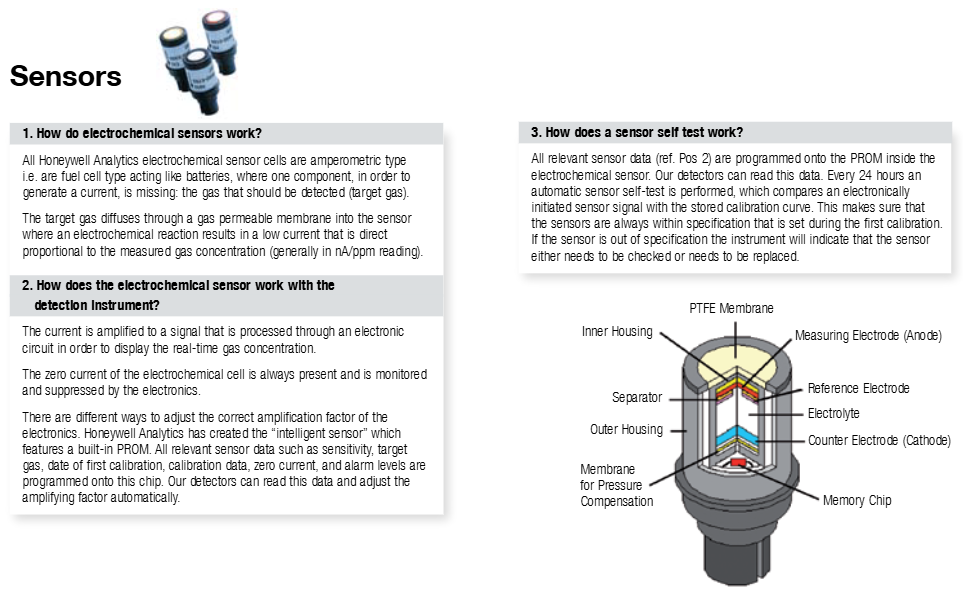
Technical specifications
Digital version (such as Satellite XT FTT, etc.)
Power requirements: Voltage ranging from 12 to 24 VDC, maximum power consumption varies for different models, such as FTT maximum 0.6W, FTT/R maximum 1.4W, etc.
- EMERSON
- Honeywell
- CTI
- Rolls-Royce
- General Electric
- Woodward
- Yaskawa
- xYCOM
- Motorola
- Siemens
- Rockwell
- ABB
- B&R
- HIMA
- Construction site
- electricity
- Automobile market
- PLC
- DCS
- Motor drivers
- VSD
- Implications
- cement
- CO2
- CEM
- methane
- Artificial intelligence
- Titanic
- Solar energy
- Hydrogen fuel cell
- Hydrogen and fuel cells
- Hydrogen and oxygen fuel cells
- tyre
- Chemical fiber
- dynamo
- corpuscle
- Pulp and paper
- printing
- fossil
- FANUC
- Food and beverage
- Life science
- Sewage treatment
- Personal care
- electricity
- boats
- infrastructure
- Automobile industry
- metallurgy
- Nuclear power generation
- Geothermal power generation
- Water and wastewater
- Infrastructure construction
- Mine hazard
- steel
- papermaking
- Natural gas industry
- Infrastructure construction
- Power and energy
- Rubber and plastic
- Renewable energy
- pharmacy
- mining
- Plastic industry
- Schneider
- Kongsberg
- NI
- Wind energy
- International petroleum
- International new energy network
- gas
- WATLOW
- ProSoft
- SEW
- wind
- ADVANCED
- Reliance
- YOKOGAWA
- TRICONEX
- FOXBORO
- METSO
- MAN
- Advantest
- ADVANCED
- ALSTOM
- Control Wave
- AB
- AMAT
- STUDER
- KONGSBERG
- MOTOROLA
- DANAHER MOTION
- Bently
- Galil
- EATON
- MOLEX
- Triconex
- DEIF
- B&W
- ZYGO
- Aerotech
- DANFOSS
- KOLLMORGEN
- Beijer
- Endress+Hauser
- MOOG
- KB
- Moxa
- Rexroth
- YAMAHA
- Johnson
- Westinghouse
- WAGO
- TOSHIBA
- TEKTRONIX


Email:wang@kongjiangauto.com







































































































